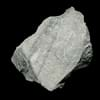Definition
Slate is a fine-grained, foliated, homogeneous metamorphic rock derived from an original shale-type sedimentary rock composed of clay or volcanic ash through low-grade regional metamorphism
Lignite is a soft brownish coal which shows traces of plants and is intermediate between bituminous coal and peat
Discoverer
Unknown
Unknown
Etymology
From Old French esclate, from esclat (French éclat)
From French, Latin lignum wood + -ite1
Class
Metamorphic Rocks
Sedimentary Rocks
Sub-Class
Durable Rock, Medium Hardness Rock
Durable Rock, Soft Rock
Group
Not Applicable
Not Applicable
Other Categories
Fine Grained Rock, Opaque Rock
Coarse Grained Rock, Fine Grained Rock, Medium Grained Rock, Opaque Rock
Texture
Foliated
Amorphous, Glassy
Color
Black, Brown, Buff, Green, Light to Dark Grey, Purple, Red, Shades of Blue
Black, Brown, Dark Brown, Grey, Light to Dark Grey
Durability
Durable
Durable
Appearance
Dull
Veined or Pebbled
Interior Uses
Bathrooms, Decorative Aggregates, Entryways, Floor Tiles, Flooring, Homes, Hotels, Interior Decoration, Kitchens, Stair Treads
Not Yet Used
Exterior Uses
As Building Stone, As Facing Stone, Garden Decoration, Paving Stone
Not Yet Used
Other Architectural Uses
Curbing
Not Yet Used
Construction Industry
As Dimension Stone
for Road Aggregate, Steel Production
Medical Industry
Not Yet Used
Not Yet Used
Antiquity Uses
Artifacts, Monuments, Sculpture, Small Figurines
Not Yet Used
Commercial Uses
Blackboards, Commemorative Tablets, Laboratory bench tops, Standard material for the bed of Billiard table, Standard material for the beds of Pool and Snooker table, Tombstones, Used in aquariums, Writing Slates
Electricity Generation
Types
Not Available
Xyloid Lignite or Fossil Wood and Compact Lignite or Perfect Lignite
Features
Easily splits into thin plates, Surfaces are often shiny, Very fine grained rock
Generally rough to touch, Helps in production of Heat and Electricity, Used as fossil fuel
Archaeological Significance
Monuments
Used
Not Yet Used
Famous Monuments
Data Not Available
Not Applicable
Sculpture
Used
Not Yet Used
Famous Sculptures
Data Not Available
Not Applicable
Figurines
Used
Not Yet Used
Formation
Slate is a low grade metamorphic rock that is generally formed by metamorphosis of mudstone or shale, under relatively low pressure and temperature conditions.
Coal formation takes place due to accumulation of plant debris in a swamp environment. The Coal formation process continues, as peat turns into lignite brown or black coal at increasing heat and pressure.
Mineral Content
Apatite, Biotite, Chlorite, Feldspar, Graphite, Hematite, Kaolinite, Magnetite, Pyrite, Tourmaline, Zircon
Not Available
Compound Content
Aluminium Oxide, CaO, Iron(III) Oxide, Potassium Oxide, MgO, Sodium Oxide, Silicon Dioxide, Titanium Dioxide
Carbon, Hydrogen, Nitrogen, Oxygen, Sulphur
Types of Metamorphism
Burial Metamorphism, Cataclastic Metamorphism, Regional Metamorphism
Not Applicable
Types of Weathering
Biological Weathering, Chemical Weathering, Mechanical Weathering
Biological Weathering, Chemical Weathering, Mechanical Weathering
Types of Erosion
Coastal Erosion, Glacier Erosion, Water Erosion, Wind Erosion
Chemical Erosion, Water Erosion, Wind Erosion
Grain Size
Very fine-grained
Medium to Fine Coarse Grained
Fracture
Splintery
Conchoidal
Streak
Light to dark brown
Black
Porosity
Less Porous
Highly Porous
Luster
Dull
Dull to Vitreous to Submetallic
Compressive Strength
Not Available
Cleavage
Slaty
Non-Existent
Toughness
1.2
Not Available
Specific Gravity
2.65-2.8
1.1-1.4
Transparency
Opaque
Opaque
Density
2.6-2.8 g/cm3
800-801 g/cm3
Resistance
Heat Resistant, Impact Resistant, Pressure Resistant, Wear Resistant
Heat Resistant
Deposits in Eastern Continents
Asia
China, India, Turkey
Bangladesh, Burma, Cambodia, China, India, Indonesia, Kazakhstan, Malaysia, Mongolia, Pakistan, Turkey, Vietnam
Africa
Not Yet Found
Botswana, Kenya, Morocco, Mozambique, South Africa, Tanzania
Europe
Belgium, France, Germany, Italy, Norway, Portugal, Spain, United Kingdom
Belgium, Bulgaria, England, France, Germany, Greece, Hungary, Kosovo, Netherlands, Norway, Poland, Romania, Serbia, Slovakia, Slovenia, The Czech Republic, Ukraine, United Kingdom
Others
Arctic
Not Yet Found
Deposits in Western Continents
North America
USA
Canada, Mexico, USA
South America
Brazil
Brazil, Chile, Colombia, Venezuela
Deposits in Oceania Continent
Australia
Not Yet Found
New South Wales, Queensland, Victoria
All about Slate and Lignite Properties
Know all about Slate and Lignite properties here. All properties of rocks are important as they define the type of rock and its application. Slate belongs to Metamorphic Rocks while Lignite belongs to Sedimentary Rocks.Texture of Slate is Foliated whereas that of Lignite is Amorphous, Glassy. Slate appears Dull and Lignite appears Veined or Pebbled. The luster of Slate is dull while that of Lignite is dull to vitreous to submetallic. Slate is available in black, brown, buff, green, light to dark grey, purple, red, shades of blue colors whereas Lignite is available in black, brown, dark brown, grey, light to dark grey colors. The commercial uses of Slate are blackboards, commemorative tablets, laboratory bench tops, standard material for the bed of billiard table, standard material for the beds of pool and snooker table, tombstones, used in aquariums, writing slates and that of Lignite are electricity generation.










